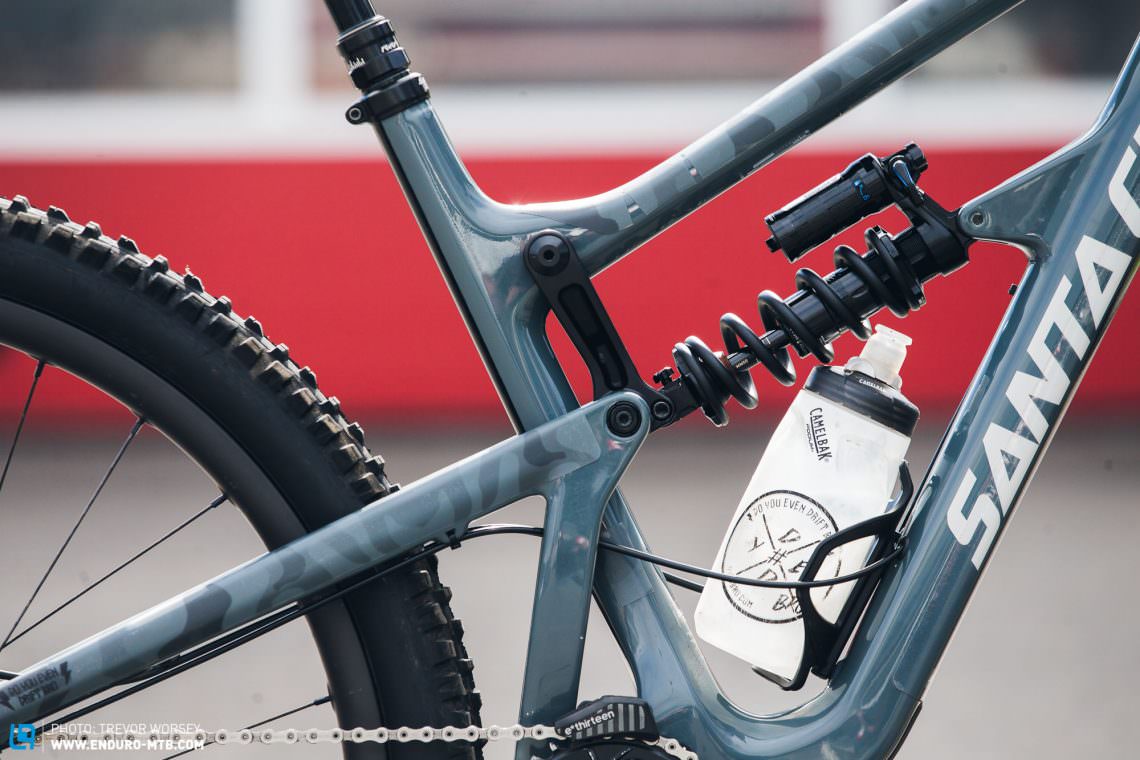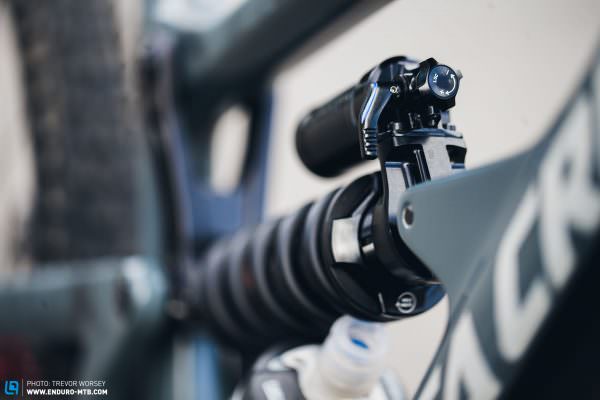Those who diligently follow the EWS will know two things; one, that Santa Cruz racer Mark Scott is currently on fire, sitting in fifth place overall! And two, that this Hightower LT is not his EWS race bike. That’s because Santa Cruz keep his race bike under lock and key, only rolling it out for races, this is his practice bike, identical except for the custom colour.
We caught up with Mark to find out how he sets up his Santa Cruz Hightower LT.

What’s that? a coil shock?
The first thing that is obvious is that Mark is running a RockShox Super Deluxe Coil RC3, with pedalling damper. Until now Mark has been racing on an air shock, but after testing at Tennessee with RockShox he really enjoyed the coil. At 69 kg Mark is running a 400lb spring, and the RockShox technicians have tuned the damper a little to suit Mark’s riding style and bike. “With the pedaling platform the only downfall is the weight, but with EWS stages getting harder and more gravity focussed, weight is no longer a huge issue. It’s like a mini DH bike.” Up front Mark sticks with the RockShox Lyrik 29er running 85 Psi, but has bumped the travel upto 170 mm. “After testing it felt really good, I removed one cm of spacers to correct the bar height, and lost a degree from the head angle, on the trail it felt really good.” Mark normally runs 3 Bottomless tokens for racing, but he switches back to 2 tokens when riding at home in Scotland as the speeds are generally lower.



Throwing out the anchors
When it comes to brakes, Mark runs SRAM Code RSC’s. “They are amazing, rock solid even on the longest stages with 200mm rotors front and back for maximum traction. 3Mark runs standard sintered pads in his Codes “The weather here is just too unreliable for organics, we get a lot of rain”. Mark runs quite a flat brake lever position, “I remember looking at UK guys and Frenchies, the French guys run their levers super flat, so I raised mine and really liked it. Mark sets his bite point 3 cm from the bar quite far out in the travel with the contact adjuster set in the firmest setting. His cockpit setup is a 760 mm Truvativ DESCENDANT Carbon DH bar with a 20 mm and 15 mm of spacers, quite a tall front end on a 29er with 170 mm forks.





Traction issues
A mini-DH bike like this needs some good rubber, and Mark is taking no prisoners. He runs dual double down sidewall tires, a Maxxis 2.5” DD High Roller II on the front and a Maxxis 2.5” DHF DH casing 2.5 with no inserts on 30 mm Santa Cruz Reserve carbon rims rolling on Industry 9 hubs. Mark runs 22/24 psi for general riding, but will push upto 24/27 psi if racing on really rocky stages. “I find the Maxxis High Roller II tends to clear a little faster in the mud than the Minion DHF, but if it’s dryer I will race the DHF 2.5 on the front too. I have been trying the Maxxis Assegai and it looks super interesting.”




What drivetrain does Mark Scott run?
Mark runs a full SRAM Eagle X01 drivetrain with a 34 tooth chainring, and he will often run a massive 36 tooth on his race bike. “I run my shifter pretty close to the grip for east downshifts, it allows me to smash through the gears when racing out of corners.”



Did you enjoy this article? If so, we would be stoked if you decide to support us with a monthly contribution. By becoming a supporter of ENDURO, you will help secure a sustainable future for high-quality mountain bike journalism. Click here to learn more.
Words & Photos:








